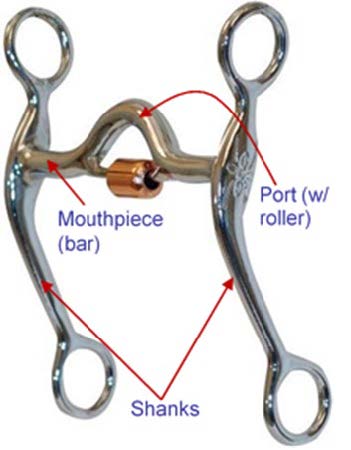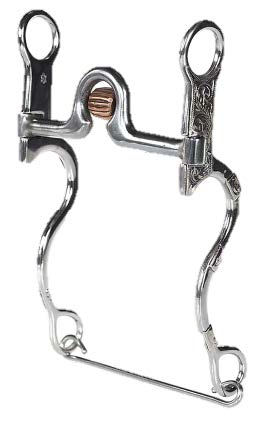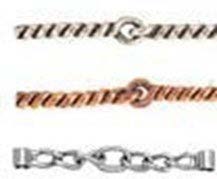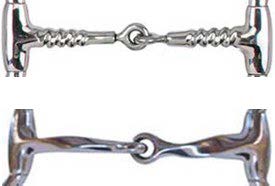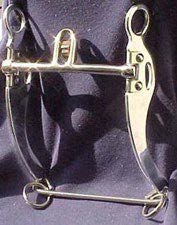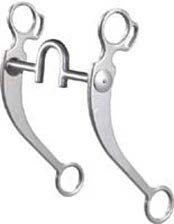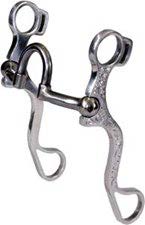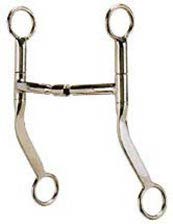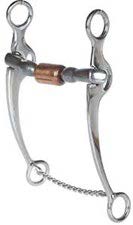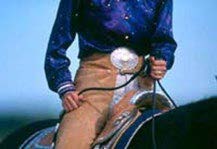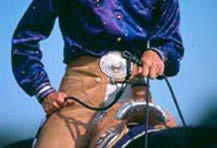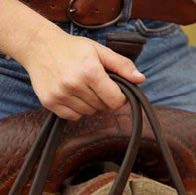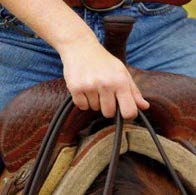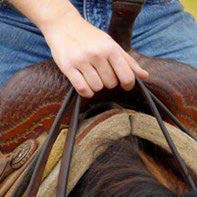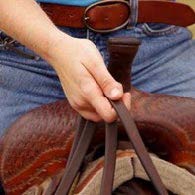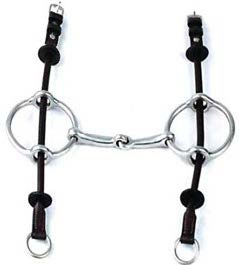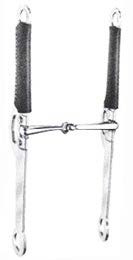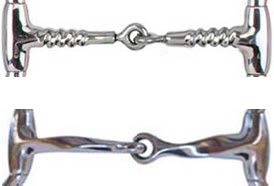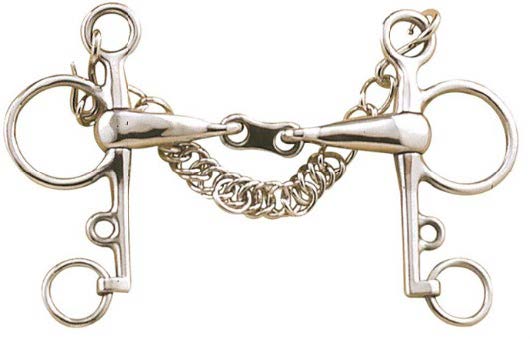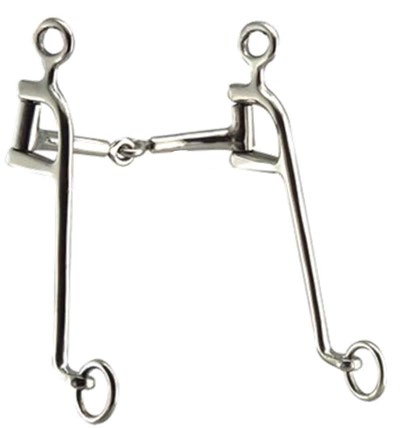Bit Rules and Equipment Guide
Revised June 2019
Basic guide to local, county, and state/regional Montana 4-H Horse shows as well as for those classes in open shows limited to 4-H membership entry. This resource is for agents, organizers, officials, exhibitors, parents and judges.
About These Guidelines
These guidelines should be used in conjunction with the current Montana 4-H State Horse Show Rulebook and Working Ranch Horse Rules. These rulebooks, which are available on the Montana 4-H web site's Horse Project pages, provide additional information about bits, other equipment and attire for respective classes.
Because the Montana 4-H Horse Program is diverse, it is difficult to generate a complete list of acceptable bits. Bits that are permitted by respective breed associations may be acceptable at the judge's discretion. A judge at his/her discretion can penalize a horse with non-conventional types of bits. Please understand that this resource is a guide and gives only examples of legal and unacceptable bits. In no way does it try to include every bit that is allowed or prohibited.
If exhibitors have questions concerning a bit they wish to use, and that specific bit is not mentioned in the current rules or these guidelines, then exhibitors should ask the equipment steward(s) and/or the judge(s) if the bit is acceptable for that show. Exhibitors should have alternative bits available so that they can make a change if it is determined by show officials that their preferred bit is unacceptable for the event.
Each county, district or regional, and state show is officiated by different stewards and judges. Therefore, exhibitors must seek approval from show officials at each show before using the questionable bit. Members should consult with professionals in their riding discipline or contact the appropriate breed association for guidance in selecting a bit in order to find one that is both appropriate and acceptable for use in Montana 4-H horse events.
Acknowledgements
Montana 4-H and the Montana 4-H State Horse Committee extend our gratitude to the Florida 4-H State Horse Program and the New England 4-H Horse Program as creators of the original content upon which Motnana's guide is based. Credit is also given to developers Wendy DeVito, Saundra TenBroeck, Joel McQuagge. The Florida and New England manuals are the most comprehensive guides of bits available to the 4-H community and their materials have been adopted for our use with their permission. The original content has been slightly modified for use in Montana.
How to Use This Guide
Bits and equipment are grouped into categories (Western, Ranch, and Speed Events; English-Hunter, and Saddle/Gaited). Images shown are labeled as either:
Acceptable
Acceptable with conditions
Unacceptable
Western, Ranch, and Speed Events Divisions
- Reference to snaffle bits mean the conventional O‐ring, egg‐butt, or D‐ring with ring
no larger than 4ʺ. The mouthpiece should be round, oval, or egg‐shaped, smooth and
unwrapped metal. It may be inlaid but must be smooth. The bars must be a minimum of
5/16ʺ in diameter, measured one inch in from the cheek with a gradual decrease to
center of the snaffle. The mouthpiece may be two or three pieces. A three‐piece connecting
ring of 3/4ʺ or less in diameter, or a connecting flat bar of 3/8ʺ to 3/4ʺ (top to
bottom) and 2" maximum width, which lies flat in the horse’s mouth, or rollers are
acceptable.
The shape of the snaffle ring outside of the horse’s mouth is unrelated to the style of mouthpiece on the inside. **You cannot determine what is in the mouth by the shape of the ring! The acceptable shapes are O-ring, egg-butt, and D-ring. And regardless of which shape, the ring may not be more than 4 inches across at its widest point.Mouthpiece Image Mouthpiece Name Acceptable/Unacceptable 
Figure 4: O-Ring mouthpiece
O-Ring ✓⃝ 
Figure 5: Egg-butt mouthpiece
Egg-butt ✓⃝ 
Figure 6: Offset D-ring mouthpiece
Offset D-ring ✓⃝ 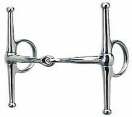
Figure 7: Full cheek mouthpiece
Full Cheek ⓧ - References to a bit mean the use of a curb bit that has a solid or broken mouthpiece,
has shanks, and acts with leverage. All curb bits must be free of mechanical device
and should be considered a standard western bit. A description of a legal, standard
western bit includes:
- Maximum shank length is 8½ʺ (Diagrams 1 and 2). Shanks may be fixed or loose.
- Curb bit mouthpieces must be round, smooth, and unwrapped metal of 5/16ʺ to 3/4ʺ in diameter, measured one inch in from the cheek. They may be inlaid but must be smooth. Nothing may protrude below the mouthpiece (bar), such as extensions or prongs on solid mouthpieces. The mouthpiece may be two or three pieces. A three‐piece, connecting ring of 3/4ʺ or less in diameter, or a connecting flat bar of 3/8ʺ to 3/4ʺ (top to bottom) and 2" maximum width, that lies flat in the mouth, or rollers are acceptable (Diagrams 1 and 2).
- The port height must be 2½ʺ maximum, with rollers and covers acceptable. Broken mouthpieces, half- breeds, and spades are standard (Diagram 1 and 2).
| Diagram 1 |
|
Figure 8: A standard western bit, showing the shanks on either side, the mouthpiece bar through the center, and the part with a roller connected to the mouthpiece bar. |
| Diagram 2 | |
|
Figure 9: Photograph of an example of a western, ranch or speed horse event bit for the use of measurements. |
|
|
Figure 10: A photograph of an O-ring bit. |
|
|
Figure 11: Photograph containing the connecting ring of a bit mouthpiece. |
|
|
Figure 12: Photograph containing the connecting flat bar of a bit mouthpiece. |
|
Western, Ranch, and Speed Events DIvisions... continued
What does it mean? ... Mouthpieces
Many of the parameters for mouthpieces are the same regardless if it is a snaffle or a curb. They need to be the same minimum diameter (5/16”), be smooth, may be broken into two or three pieces, and if there is a connecting flat bar or ring, those connectors must meet the same respective measurements. It does not mean the connecting piece has to be a ring or flat bar.
The connecting piece could also be a roller or hinged port. Much of the determination of whether a mouthpiece is acceptable or not comes down to if it is smooth.
What is "smooth"?
Smooth simply means that there are no bumps or ridges that will press into the bars of the horse’s mouth or the pressure points on the tongue when pressure is applied. Things that make it not smooth may include (but are not limited to) any kind of twist, a wire wrap, carvings into the metal that create ridges, chain, etc.
Mouthpiece examples (applies to both snaffle and curb bits):
| Mouthpiece Examples | Description | Acceptable/Unacceptable |
|
Figure 13: A simple jointed mouthpiece |
Simple jointed, smooth | ✓⃝ |
|
Figure 14: A connecting bar mouthpiece |
If connecting bar is 3/8 – ¾ inch top to bottom, this is acceptable, and wrap on a connecting bar is acceptable because it is not a primary pressure point. | ⍰ |
|
Figure 15: Three unacceptable, not smooth mouthpieces |
Mouthpiece is not smooth due to the twists and loose links. | ⓧ |
|
Figure 16: Connecting bar mouthpiece |
If the connecting flat bar is 3/8 – ¾ inch top to bottom, this is acceptable. | ⍰ |
|
Figure 17: Wire wrapped, unacceptable mouthpiece |
Wire wrapped; must be unrapped metal; not smooth | ⓧ |
|
Figure 18: Connecting ring mouthpiece |
A connecting ring is acceptable if it is <3/4 inch across | ⍰ |
|
Figure 19: Two twisted mouthpieces |
The top mouthpiece is a fast twist/corkscrew. Below is a slow twist. Both create numerous sharp pressure points, making these mouthpieces unacceptable. | ⓧ |
|
Figure 20: Center link, smooth metal inlay mouthpiece |
The metal inlay in this mouthpiece is smooth, making it acceptable. | ✓⃝ |
|
Figure 21: Center link, protruding metal inlay mouthpiece |
The metal inlay in this mouthpiece has protruding links, making it unacceptable. | ⓧ |
| Curb Mouthpiece Examples | Description | Acceptable/Unacceptable |
|
Figure 22: Example of a curb bit mouthpiece |
Half-breed mouthpiece. | ✓⃝ |
|
Figure 23: Prong Bit |
Prong bit, with metal protruding below the bar, causing sharp pressure points. | ⓧ |
|
Figure 24: Example of a curb bit mouthpiece |
Port should measure a minimum of 2 ½ inches high and the shanks should measure a minimum of 8 ½ inches long. | ⍰ |
|
Figure 25: Example of a curb bit mouthpiece |
An example of an acceptable 3-piece mouthpiece. | ✓⃝ |
|
Figure 26: Example of a curb bit mouthpiece |
An example of an acceptable 3-piece mouthpiece. | ✓⃝ |
|
Figure 27: Example of a curb bit mouthpiece |
An example of an acceptable 3-piece mouthpiece. | ✓⃝ |
Western, Ranch, and Speed Events Divisions ... continued
References to a romal means an extension of braided material attached to closed reins (Examples 1). This extension may be carried in the free hand with an approximate 16ʺ spacing between the reining hand and the free hand holding the romal. The rider’s hand shall be around the reins with the fingers closed, thumb on top, and no fingers between the reins.
The romal shall not be used forward of the cinch or to signal or cue the horse in any way. Any infraction of this rule shall be penalized severely by the judge (Examples 1).
Example 1: Romal Reins
| Romal Reins |
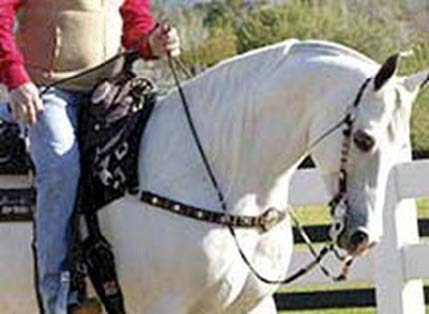 |
| Romal Hold Example | Acceptable/Unacceptable |
|
Figure 28: Correct Romal Hold |
✓⃝ |
|
Figure 29: Incorrect Romal Hold |
ⓧ |
A curb bit must be used with a curb strap or curb chain properly attached so as to make contact with the horseʹs chin. Chain curb straps must be at least 1/2ʺ in width, and lie flat against the jaw of the horse. No wire curbs, regardless of how taped or padded. Absolutely no rigid material will be permitted under the jaws, regardless of how padded or covered. (Examples 2)
Example 2: Curb Straps
| Curb Straps | Description | Acceptable/Unacceptable |
 |
All seven of these examples are acceptable | ✓⃝ |
| This strap is okay is it is less than ½ inch wide | ⍰ | |
 |
A chain altered to create lumps and that does not fit against the jaw is not acceptable | ⓧ |
 |
Chain is greater than ½ inch wide | ⓧ |
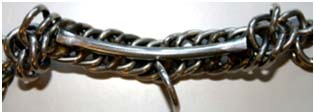 |
A rigid bar added to a chain is not acceptable | ⓧ |
Western Ranch Divisions
- References to hackamore mean the use of a non‐mechanical flexible, braided rawhide
or leather,or rope bosal, the core of which may be either rawhide or flexible cable.
Absolutely no rigid material will be permitted under the jaws, regardless of how padded
or covered.
Bosals are the only type of hackamore allowed in the Western Division. These are simple, flexible hackamores with no metal or working parts. Nothing over the nose or under the jaw may be rigid.What does it mean? ... Western Division Hackmores 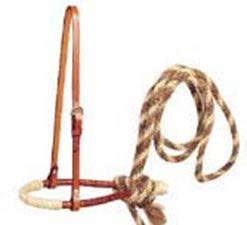
Figure 30: Soft material makes this acceptable.
✓⃝ 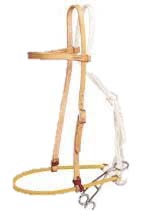
Figure 31: Rigid material under the jaw makes this unacceptable.
ⓧ 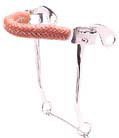
Figure 31: Rigid material under the jaw makes this unacceptable.
ⓧ 
Figure 33: Rigid material over the nose and the mechanical aspect make this unacceptable.
ⓧ - Slip or gag bits, and donut and flat polo mouthpieces are PROHIBITED.
Slip bits allow the mouthpiece to slide up the shank when pressure is applied, thereby increasing the leverage action in the mouth. With gag bits, the reins (attached directly to the headstall) slide through the bit rings and pull the mouthpiece up in a similar fashion. Neither type of ‘gag action’ is allowed.
Flat polo mouthpieces are functionally the same as a Rutledge Roper. Neither are allowed in the Western division.What does it mean? ... Slip/gag, Donut, and Polo Mouthpieces 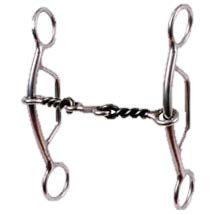
Figure 34: Slip Mouthpiece, with a gag action and not smooth make this unacceptable.
ⓧ 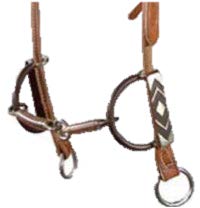
Figure 35: Gag bit and gag action are unacceptable.
ⓧ 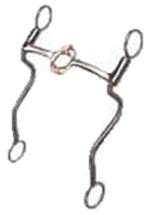
Figure 36: Donut mouthpieces are unacceptable.
ⓧ 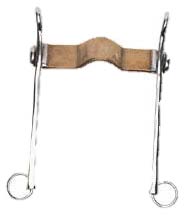
Figure 37: Flat polo mouthpieces are unacceptable.
ⓧ Western Ranch Divisions, continued
- Horses 4-years-old and younger may be shown in a snaffle bit, hackamore, curb bit,
half-breed, or spade bit.
- When using a snaffle bit, a loose hobble strap is optional (leather or nylon only, no chain). Reins to be attached above the hobble strap, if used.
- Leather or woven split reins or mecate reins are acceptable with a snaffle bit.
- Junior horses (4 years old and under) that are shown with a hackamore or snaffle bit
may be ridden with two hands on the reins (Examples 3). The rider's hands should be
carried near the pommel and not further than 4" out on either side of the saddle horn.
Rider's hands must be steady with very limited movement. Rider's hands should be visible
to the judge(s) at all times.
Example 3: Holding snaffle/bosal reins✓⃝
Correct Hold
ⓧ
Incorrect Hold
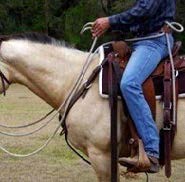
Figure 38: Mecate rein - one-piece continuous rein; separate rope attached to saddle or belt.
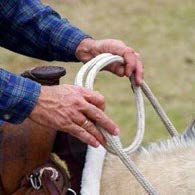
Figure 39: Incorrect Hold
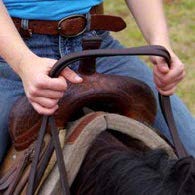
Figure 40: Correct Hold

Figure 41: Incorrect Hold
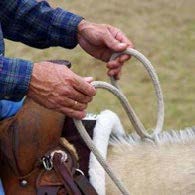
Figure 42: Correct Hold

Figure 43: Incorrect Hold
- Horses 5-years-old and older may only be shown in a curb bit, half-breed, or spade
bit.
- Only one hand may be used on the reins, and hand must not be changed (Examples 4). When using split reins, the hand is to be around the reins, and if desired only the index finger may be between the reins. Violation of this rule will result in an automatic penalty.
- In ranch classes when showing in a curb bit, reins must be held in one hand, but may be held in any manner.
- Roping reins may be used for speed events and ranch horse classes.
Example 4: Holding Curb Reins
|
✓⃝ Correct Hold |
ⓧ Incorrect Hold |
|
Figure 44: Correct Hold |
Figure 45: Incorrect Hold |
|
Figure 46: Correct Hold |
Figure 47: Incorrect Hold |
|
Figure 48: Correct Hold |
PER RULE 4B: Any of these holds are acceptable in Ranch classes.
Speed Events Division Only
- References to hackamore mean either a mechanical or non-mechanical hackamore.
- Non-mechanical: Flexible, braided rawhide or leather, or rope bosal, the core of which may be either rawhide or flexible cable.
- Mechanical: The core may be any flexible cable, rawhide, or metal material, and must be covered with leather, soft plastic tubing, or similar material for padding.
- Absolutely no rigid material will be permitted over the nose or under the jaws, regardless
of how padded or covered.
Non-mechanical hackamores are allowed but mechanical hackamores are PROHIBITED in the Speed Events Division. The materials over and under the nose of the non-mechanical hackamore must be flexible.What does it mean? ... Speed Events and Hackmores Description Acceptable/Unacceptable 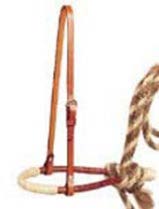
Figure 49: Rawhide Bosal
Acceptable hackamore ✓⃝ 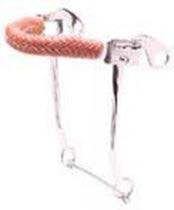
Figure 50: Mechanical Hackmore
Unacceptable mechanical hackmmore ⓧ 
Figure 51: Easy/Fast Stop
Rigid material under the jaw makes this unacceptable. ⓧ 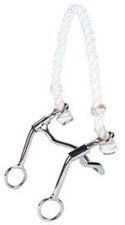
Figure 52: Stop & Turn
Rigid material under the jaw makes this unacceptable. ⓧ 
Figure 53: Fast Stop
Rigid material over the nose makes this unacceptable. ⓧ
- Slip or gag bits, including the Wonder Bit, or flat mouthpiece bits like the Rutledge
Roper are PROHIBITED in speed events.
Slip bits allow the mouthpiece to slide up the shank when pressure is applied (reins pulled), thereby increasing the leverage action in the mouth. With gag bits, the reins (attached directly to the headstall) slide through the bit rings and pull the mouthpiece up in a similar fashion. Bits with this kind of ‘gag action’ are PROHIBITED in Speed Events.What does it mean? ... Slip/Gag Bits and Rutledge Roper Description Acceptable/Unacceptable 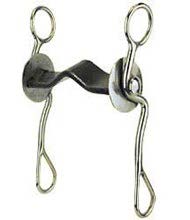
Figure 54: Rutledge Roper Bit
Flat Mouthpiece makes this bit unacceptable. ⓧ 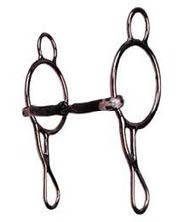
Figure 55: Wonder Bit
Gag action makes this bit unacceptable. ⓧ 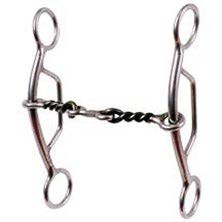
Figure 56: Gag Action and Mouthpiece
Gag action and a mouthpiece that is not smooth makes this bit unacceptable. ⓧ
In Speed Events, flat mouthpiece Rutledge Roper bits are also acceptable. The mouthpiece of which should rotate freely on the shanks so it remains flat on the tongue when pressure is applied. - Horses of any age may be shown with a snaffle bit.
- Riders may use two hands on the reins regardless of type of bit and age of horse. Roping reins are allowed in speed events.
- Judge or equipment official may prohibit the use of bits or equipment deemed too severe.
English Division (includes Hunter but not Dressage)
- An English snaffle (no shank), Kimberwick, Pelham, or full bridle (Weymouth) must
be used. If a bit is used that requires two reins, it may be used with a converter
(a U-shaped piece of leather that fastens between the snaffle ring and the curb ring
at the end of the shank on the Pelham). The use of a bit converter is not illegal,
but some judges may not consider it technically correct so its use may be penalized.
Snaffle bit rings may be no larger than 4ʺ in diameter.
Snaffles: The shape of the snaffle ring outside of the horse’s mouth is unrelated to the style of mouthpiece on the inside. **You cannot determine what is in the mouth by the shape of the ring! The acceptable shapes are O-ring, egg-butt, D-ring, and full cheek.
Pelhams and Kimberwicks use a snaffle and/or curb action. A Pelham has a shank and requires reins to be attached to both the snaffle ring and curb ring. Kimberwicks have ‘cut-outs’ where a rein can be attached to either location – one resulting in more snaffle action and one with more curb action. Full bridles (Weymouths) have separate curb & snaffle (bridoon) bits and require two reins.What does it mean? ... English Bit Types Description/Title Acceptable/Unacceptable 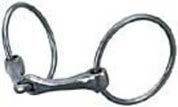
Figure 57: O-Ring/Loose Ring English Bit
O-Ring/Loose Ring ✓⃝ 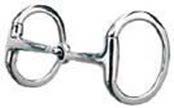
Figure 58: Egg-Butt English Bit
Egg-Butt ✓⃝ 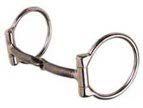
Figure 59: Offset D-Ring English Bit
Offset D-ring ✓⃝ 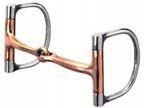
Figure 60: D-Ring English Bit
D-Ring ✓⃝ 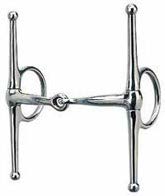
Figure 61: Full Cheek English Bit
Full Cheek ✓⃝ What does it mean? ... English Bit Types Description Acceptable/Unacceptable 
Figure 62: Kimberwick Bit
This bit has two location options to attach one rein ✓⃝ 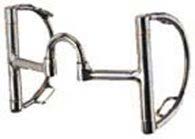
Figure 63: Kimberwick Bit
This bit has two location options to attach one rein. Either rein attachment location is acceptable. ✓⃝ 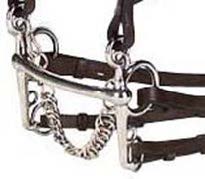
Figure 64: Pelham Bit
This is the correct use of a Pelham bit. ✓⃝ 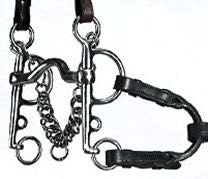
Figure 65: Pelham Bit
This bit requires two reins. ✓⃝ - Any bit having a fixed rein requires use of a curb chain. Curb chain must be at least
1/2” wide and lie flat against the jaw of the horse.
- Triangle ("knife edge"), true gag action, and elevator bits are PROHIBITED.
- Snaffle bits with slow twist, corkscrew, or twisted wire mouthpieces are
PROHIBITED.
With gag bits, straps connect the reins directly to the headstall, sliding through the bit rings. When pressure is applied, it pulls the mouthpiece up higher in the mouth. Elevator bits have an exaggerated height headstall attachment, or mouthpieces that slide up & down on the cheek rings and create a mouthpiece-lifting gag action when pressure is applied.
| What does it mean? ... Gag and Elevator Bits | Description | Acceptable/Unacceptable |
|
Figure 66: Gag Bit |
The true gag action on this bit makes it an unacceptable bit. | ⓧ |
|
Figure 67: Elevator Bit |
This is an elevator bit, making it unacceptable. | ⓧ |
|
Figure 68: Elevator Bit |
This is an elevator bit, making it unacceptable. | ⓧ |
English Divison, continued
- Solid or broken mouthpieces must be 5/16ʺ to 3/4” in diameter, measured 1ʺ from the cheek and may have a port no higher than 1½” (see Diagram 3). On broken mouthpieces, connecting rings of 3/4” or less in diameter or connecting flat bar of 3/8ʺ to 3/4ʺ (measured top to bottom), which lie flat in the horse's mouth, or rollers are acceptable.
- Smooth round, oval or egg-shaped, and straight bar or solid mouthpieces are allowed. They may be smooth inlaid, synthetic wrapped (including rubber or plastic), or encased. Waterford bits are allowed.
Regardless of the type of bit (snaffle, Pelham, Kimberwick, etc.), mouthpieces must meet the same requirements – have a diameter of 5/16” to 3/4”, may be solid (1 piece) or broken (2 or 3 pieces), and if there is a connecting ring or flat bar, those connectors must meet the same respective measurements. It does not mean the connecting piece has to be a ring or flat bar.
Nothing may protrude below the mouthpiece (bars or prongs).
| What does it mean? ... Mouthpieces | Description | Acceptable/Unacceptable |
|
Figure 69: Simple jointed, round mouthpiece |
Simple jointed, round | ✓⃝ |
|
Figure 70: Three-piece mouthpiece |
Three-piece mouthpiece | ✓⃝ |
|
Figure 71: Roller in joint mouthpiece |
Roller in joint is acceptable | ✓⃝ |
|
Figure 72: Singl twist, wire wrapped mouthpieces |
Single twisted wire, or wire wrapped mouthpieces are unacceptable | ⓧ |
|
Figure 73: Multiple link & twisted wire mouthpieces |
Double twists and lose links are unacceptable | ⓧ |
|
Figure 74: Mouthpiece; port is less than 1 1/2 inches |
Three-piece with port as connector | ✓⃝ |
|
Figure 75: Mouthpiece; port is less than 1 1/2 inches. |
One-piece wide port | ✓⃝ |
|
Figure 76: Fast twist and slow twist mouthpieces |
The top mouthpiece is a fast twist/corkscrew. Below is a slow twist. Making these mouthpieces unacceptable. | ⓧ |
|
Figure 77: Waterford bit mouthpiece |
Waterford bit is specifically listed as acceptable; three smooth, round balls linked together. | ✓⃝ |
|
Figure 78: Triangle/knife-edge mouthpiece |
Triangle or knife-edge bit is unacceptable; very sharp on the bars & tongue. | ⓧ |
|
Figure 79: Multi-roller, rough mouthpiece |
Multiple rollers set in the mouthpiece may result in many pressure points. | ⓧ |
|
Figure 80: Smooth, round roller mouthpiece |
Mouthpiece made of a series of rollers results in allowable smooth, round shape. | ✓⃝ |
| Diagram 4: Saddle/Gaited Bit Measurements | Rules |
|
Figure 81: Pelham bit with a three-piece mouthpiece |
|
|
Figure 82: Weymouth bit |
|
|
Figure 83: Bridoon mouthpiece |
|
|
Figure 84: Walking horse bit with two-piece mouthpiece |
|
A few final reminders for Gaited classes...
- Bridles/bits should coincide with the style of riding chosen. See the appropriate section (Western, Hunter, or Saddle Seat) for bit requirements.
- Paso Finos may show in hackamores as approved by the Paso Fino Horse Association (PFHA) for Pleasure classes.
- Tennessee Walking Horses (TWH) may be shown in a curb bit typical for the breed as long as the mouthpiece and shanks comply with the parameters described above for Saddle Seat.
| What does it mean?... Bits for Gaited Classes |
|
Gaited horses may be shown in Western, Hunter, or Saddle type tack, depending on the breed of the horse and/or the preferences of the exhibitor. Follow the bit rules for the style of riding used. Tennessee Walking Horses (TWH) are typically shown in long shanked curb bits. This is an allowable bit for the TWH for both Western and Saddle Seat tack. Paso Finos often show in types of hackamores not described in this section. See the PFHA rules for Paso Fino bridles. |

